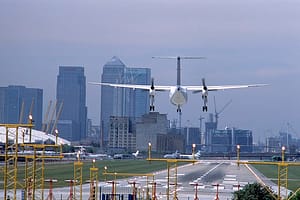Place Informatics, the leading provider of footfall and location visitor behaviour data monitoring has published new data to show how footfall during the Christmas shopping period in 2022 across 371 UK shopping centres increased by an average of 11.95%.
This list includes large, medium and small shopping centres, both in town and out of town and shows a positive trend for the majority as footfall increased continually from September to December.
However, this data doesn’t include the footfall for many struggling shopping centres across the UK that have been saved by local councils who have had to intervene in the short term to ensure they survive. As the table below shows, many of this subset group of 10 council-acquired shopping centres interestingly outperformed the national average, even though they are being redeveloped with a much-needed boost in shopper numbers over the Christmas shopping period.
St Tydfil Shopping Centre in Merthyr Tydfil saw the biggest increase in shoppers with an average increase of 25%. This positive trend comes as the local council recently announced plans to update the 1970s shopping centre by improving market facilities, increasing public open spaces and high-quality food and drink venues and encouraging more independent businesses. All the shopping centres analysed showed some form of increase apart from the Charter Walk Centre in Burnley which had a significant drop of 23%.
Each of these shopping centres is battling unique local challenges and scenarios which has caused them to struggle to attract shoppers or maintain local footfall. These include changing shopper behaviour, increased online shopping, an increase in out-of-town shopping centres and large retail outlets and a huge increase in vacant shops across the UK as many large and small retailers have closed since the pandemic.
Although this data highlights a positive trend in the main overall, with significant footfall increases in the short-term these large percentage shifts are due in the main to a dwindling number of shoppers throughout the year which magnifies any increase and the long-term future of many of these shopping centres is still very much in doubt. Councils are looking at how these centres can be repurposed and what services, facilities or leisure activities will attract more shoppers and visitors.
Footfall and visitor data are key to the success of these centres by empowering councils with the detailed knowledge to truly understand how they are performing, which businesses and services are attracting regular shoppers and visitors from further afield, whilst also providing the opportunity to review and compare data from other successful shopping centres, high streets and town centres.
Place Informatics uses mobility location data to calculate visitor behaviour patterns for over 2,300 town centres across the UK and all 260 Business Improvement District town centres. Footfall is a useful tool to see how town centres, high streets and particular businesses perform. However, understanding how these visitors are behaving and also which catchment areas they are visiting could offer the vital information needed to truly change the fortunes of many shopping centres across the UK.
This data can help retailers, hospitality, councils and many other businesses and services understand how visitors behave, where they attract visitors, and most importantly what services they are utilising on their visit, including green spaces and car parks.
Clive Hall, CEO of Place Informatics, commented, “Although many of the council-saved centres saw large increases in shopper numbers this doesn’t reveal the true picture. Fundamentally they need to be aligned with the needs of their local communities, which tend to change over time and in response to popular trends, social and economic changes, and competition from other shopping locations.
Our data and insights offers local councils detailed insights to show how visitors are behaving on a daily, weekly, monthly and annual basis and also provide reporting to assess the performance of these shopping centres and comparisons with others across the UK.”






Leave a Comment